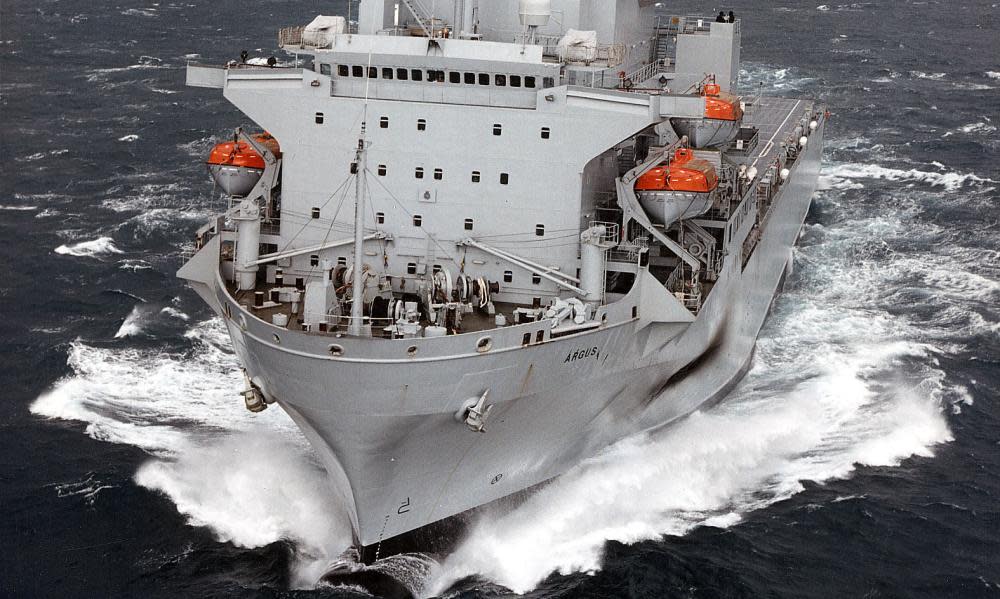British military could be left depleted after £13bn shortfall

Britain’s military will have fewer armoured vehicles, aircraft and lose the use of its only naval hospital ship because of a shortfall of up to £13bn in its 10 year equipment budget, the government spending watchdog warned.
The National Audit Office (NAO) said the inability of the Ministry of Defence (MoD) to control its spending was starting to affect Britain’s military capability, and accused it of having a short term focus that risked making the situation worse in the future.
In one case, desperate officials paid Boeing $8.2m (£6.4m) just to delay submitting invoices so that the main spending would take place in future years – and only sought permission from the Treasury after the auditor raised concerns.
Gareth Davies, head of the NAO, accused the department of not making “the necessary strategic decisions” and said that it had tried to plug gaps with a “short-term focus on living within annual budgets”.
The government auditor said the lack of financial discipline was “increasingly affecting the armed forces’ ability to maintain and enhance the UK’s military capability” – and that it was the third year in a row the budget had been breached.
According to the NAO, the MoD is planning to spend £183.6bn in the next decade – £2.9bn over budget. If all risks materialised, the shortfall in the 2019 to 2029 equipment plan would balloon to £13bn.
But NAO insiders argued that the most significant impacts on military capability were due to a failure to prioritise. For example, there is no budget to replace or extend the life of the RFA Argus, a 100-bed naval hospital ship, beyond 2024.
Because of the loss of control, the army has been forced to upgrade fewer tanks and has abandoned various other anti-armour projects, while the Royal Air Force is only able to afford 48 of the 114 F-35 jets it had hoped to buy, the auditor added.
A decision to delay the introduction of the next generation Protector drone will only increase long term costs, the NAO said. The Protector delay would add £187m to the budgets in future years, plus a further £50m to retain the existing generation of Predator drones for longer.
The financial shortfall is even more acute in the first half of the 10-year cycle, the NAO warned, saying the ministry had a £6bn budget shortfall of budget up to 2023-24.
Meg Hillier, the chair-elect of the Commons public accounts committee, said: “For the third successive year, the equipment plan is unaffordable. This cannot carry on. The department is locked into short-term thinking, wasting taxpayer’s money, and has missed two chances to sort things out.”
The detailed rebuke comes two days after Boris Johnson announced a strategic review of the government’s defence and foreign policy, which came with a hint that spending on the armed forces could increase beyond the current 2.1% of GDP, creating the hope that taxpayers’ money could plug the gap.
However, it will run by Downing Street and the Cabinet Office, and one of its key figures will be Dominic Cummings, Johnson’s chief aide, who has been highly critical of the soaring costs of MoD procurement.
Stewart MacDonald, the SNP’s defence spokesman, said the NAO’s verdict amounted to “an abject failure of Tory defence policy” and warned that “the United Kingdom is rapidly becoming the ‘hollow force’ experts have long warned that it would”.
MoD equipment budgets are spent on procuring submarines, warships, aircraft and armoured vehicles. It also includes budgets to service existing equipment, including Typhoon aircraft, and introducing modern technology.
An MoD spokesperson said: “Managing these ambitious, complex programmes can be challenging, but we have already achieved £7.8bn of efficiency savings and last year secured an extra £2.2bn for defence.
“The department is progressing towards managing down the legacy liability that it has inherited over the years.”

 Yahoo News
Yahoo News 
